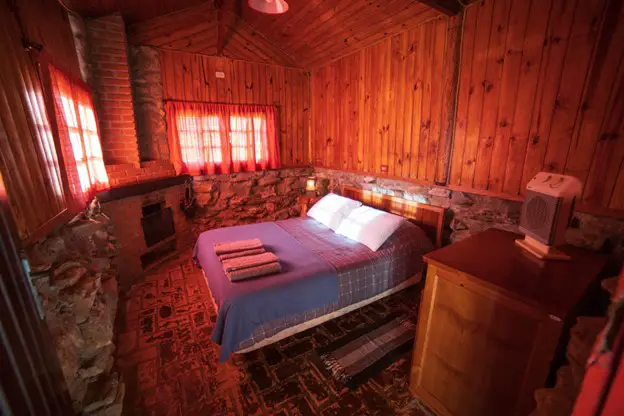
When the weather turns chilly, experiencing a furnace breakdown can seem like an absolute nightmare. Nonetheless, being armed with some basic understanding of your heating system allows you to address small problems yourself and recognize when it’s necessary to summon an expert to restore your furnace’s functionality.
Knowing a little bit regarding a furnace’s components can help you comprehend how a furnace operates in the beginning. If any of your major components fails, furnace repair Ohio technicians can get your unit back online swiftly after proper troubleshooting. A heat exchange system, burner, ducting, plenum, blower, and exhaust or vent pipe are components found in every furnace. Some furnaces also come with an air conditioner that provides cooling throughout the summer.
The burner is where the heating process starts. The burner activates when the temperature decreases to a level where the furnace must run. Thus, the gas is transported to the thermal energy exchanger. Your thermostat regulates the burner, for comparison. Your furnace either has a single burner or twin burners (which heat bigger volumes of air), according to the size of your house.
After that, air is drawn into the heat exchanger, which converts the gas plus air into heat that is ultimately transferred via the ducting in your home. The result is combustion. When fuel and air are combined, they ignite, causing combustion, which produces heat. Finally, the heated air enters the blower-equipped air distribution system.
Through a different vent, outside air enters the system as the procedure of combustion is taking place. Heat is mixed with the outside air. The air is then heated to the proper temperature and is distributed via the ducting throughout the house.
Filtration is necessary for this brand-new, pure outside air, though. As a consequence, the filtering procedure eliminates particles and dirt before it is kept in the furnace’s plenum, an enclosed area. The furnace’s blower then kicks on and starts to blast hot air through your ductwork or ventilation system.
The furnace will blast hot air whenever you need it if the blower is clean and in good functioning order. The air circulation system continues to be in charge of regulating the air temperature to the thermostat setting.
Your furnace’s flue as well as vent pipe are in charge of maintaining healthy indoor air quality. It accomplishes this by venting toxic combustion byproducts like the gas carbon monoxide as well as other poisonous pollutants outside your house. To prevent a backup regarding this potentially deadly exhaust into your house, the flue opens and shuts as necessary.
The HVAC system’s ductwork also enables hot air to be dispersed throughout your house.
To promote maximum air circulation, keep ducts clean and clear of obstructions or trash. Click here to read more on ductwork. The air filter in the furnace also helps to clean and cleanse the air as it circulates. This is crucial for the upkeep of the heating and ventilation system and reduces airborne allergens and smells. Additionally, this lessens the need for vacuuming and dusting in your house.
This procedure ends when the ambient temperature in your house reaches the preset level and does not resume until the following time heat is needed.
Some heaters include a humidifier installed that replenishes moisture in the hot air before it travels down the ductwork. This contributes to the improvement of the atmosphere.

When a furnace has an air conditioner attached, the cooling process starts when the air conditioner turns on. It initially turns on the evaporator coil in the air conditioner, which cools and dehumidifies the air. The surplus moisture is then sent to the drainage system in your house through the condensate line.
The compressor then moves a refrigerant via the evaporator coil (https://swtc.edu/Ag_Power/air_conditioning/lecture/evaporator.htm) to release heat outside. After cooling, this air returns to the furnace unit where it is conditioned and given humidity. The cooled air then travels via the ductwork and air filter before entering the various rooms in your house.
Finding the right furnace size might help homeowners avoid frequent problems. A heating system that is too big for the room is in will short cycle, increasing wear and on the furnace, and costing more due to electricity spikes. A furnace which is inadequate for a room will run continuously throughout the winter months, consuming more energy and eventually costing more.
Now that you understand the basics of how the furnace operates, you can give a generalized idea of what is happening to the furnace repair technician in order to convey the urgency of the problem. Even if you can’t fix the issue, at least you can get some help on the way with hopefully the right tools for the repair to get your home nice and warm, and with everyone safe inside of your home.
Be certain that you call a technician immediately if there are any funny smells, or it seems as though the gas is running, but the furnace isn’t lit or heating.
Understanding the Benefits of Window and Door Replacement
The Hidden Dangers Of Neglected Drains: Why Regular Cleaning Is Essential
Flat Roman Shades
How to Keep a Shower Curtain From Falling Down
Armchairs For Living Space
How To Heat a Bathroom Without Central Heating
How To Maintain Your Roof Top Tent in Top Condition
Importance of Industrial Plumbing
There are affiliate links in this post. At no cost to you, I get commissions for purchases made through links in this post.